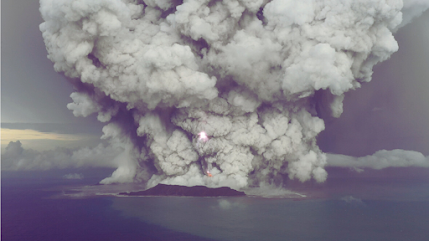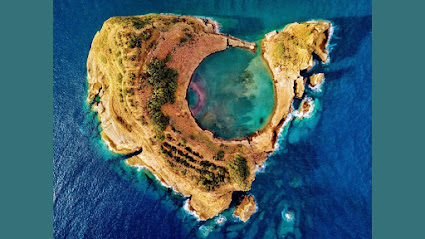Exploring the Hidden Hazard: Why Underwater Volcanic Eruptions Are More Harmful Than Previously Believed
A volcano is a geological formation that occurs when magma from the Earth's mantle reaches the surface. The magma, which is molten rock, forms a chamber under the surface, and as pressure builds up, it forces its way out, creating a volcanic eruption. The eruption can take various forms, depending on the type of volcano, the composition of the magma, and the location.
There are two main types of volcanic eruptions: explosive and effusive. Explosive eruptions are the most violent and dangerous. They occur when highly viscous magma, containing high levels of gas, is released from the volcano. As the gas expands, it causes a sudden and violent explosion, sending ash, rock, and other debris high into the air. These eruptions can be extremely destructive, causing widespread damage to property and infrastructure, and can even be deadly.
Effusive eruptions, on the other hand, are less violent but still pose a significant hazard. They occur when less viscous magma, with lower gas content, flows out of the volcano in a slow and steady stream. While these eruptions are less destructive than explosive ones, they can still cause significant damage and disrupt local communities.
Calderas are another geological feature associated with volcanic eruptions. They are large, bowl-shaped depressions that form when a volcano collapses after an explosive eruption. Calderas can be extremely hazardous, as they can release large amounts of ash and other debris, which can cause significant damage and pose a threat to human health.
Submarine volcanoes, which are located underwater, are becoming increasingly recognized as a significant hazard. While they may be less visible than their land-based counterparts, they can still cause significant damage, particularly through the creation of tsunamis. Submarine volcanoes can also cause underwater landslides and the release of toxic gases, which can be harmful to marine life and even pose a threat to human health.
Volcanic eruptions are a natural phenomenon that have played a significant role in shaping the Earth's geology. However, they can also be extremely hazardous, and the threat posed by submarine volcanoes is becoming increasingly recognized. As our understanding of these natural hazards grows, it is essential that we continue to develop monitoring and prediction systems to protect communities from the devastating impact of volcanic eruptions.
Research is needed to understand the behavior of submarine volcanoes and the potential hazards they pose. Scientists are continually developing new technologies to monitor underwater activity, such as ocean-bottom seismometers, remote-operated vehicles, and sonar mapping systems. These tools can help scientists better understand the structure of submarine volcanoes and monitor for signs of impending eruptions.
Furthermore, the impact of submarine volcanic eruptions on the marine environment is also a cause for concern. Toxic gases released by these eruptions can cause harm to marine life, and the deposition of volcanic ash and debris can have long-lasting effects on ocean ecosystems. Scientists are working to understand the impact of these eruptions on marine environments and develop strategies to mitigate their effects.
Underwater volcanic eruptions can release toxic gases, chemicals, and heavy metals into the surrounding water, which can harm marine life and affect human health. They can also trigger tsunamis and disrupt the ocean's ecosystem.
Underwater volcanic eruptions can be more dangerous than those on land because the water can amplify the effects of the eruption. The water can also cause the release of additional gases and chemicals that can be harmful to marine life.
Researchers have been studying the effects of underwater volcanic eruptions for many years. They have found that the release of toxic chemicals and heavy metals can harm marine life and that the impact of these eruptions can be felt far beyond the immediate area.
There is no guaranteed way to protect ourselves from the dangers of underwater volcanic eruptions. However, researchers are working to better understand the risks associated with these eruptions and to develop new technologies that can help detect and mitigate their effects.
Individuals can help prevent the harmful effects of underwater volcanic eruptions by supporting efforts to reduce pollution and protect the health of the ocean's ecosystem. This can include reducing plastic waste, supporting sustainable fishing practices, and advocating for stronger environmental protections.
While volcanic eruptions are a fascinating natural phenomenon, they can also be incredibly hazardous. Submarine volcanoes, in particular, are an emerging threat that requires further research and monitoring. By understanding the behavior of these underwater volcanoes and implementing strategies to mitigate their effects, we can better protect communities from the devastating impact of volcanic eruptions.






No comments